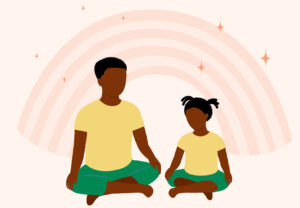The mental health of students and teachers is getting more and more attention these days, so putting yoga programmes in schools has become a sign of hope. The goal of this project is not only to improve academic success but also to create a safe and supportive space that is good for mental health. This piece talks about the many benefits of these kinds of programmes, how to put them into action, and any problems that might come up. The goal is to give schools that want to use this transformative method a complete guide.
Why meditation is important
Good things for students
Meditation has been shown over and over again to help students focus, control their emotions, and be more resilient. You can use these skills not only to do well in school, but also to handle the ups and downs of life.
Good things for teachers
Meditation is also good for teachers, who are often overlooked as heroes in schools. According to research, teachers who do these things every day can feel less stressed, be happier with their jobs, and connect more deeply with their kids.
How Mental Health Is Right Now in Schools
There has been a worrying trend in the mental health of people in school settings. More and more students and teachers are saying they are very stressed and anxious, which shows how badly we need effective solutions like meditation programmes right away.
Putting in place meditation programmes
How to Start Figuring Out What People Need
In the first step, you need to carefully look at what the school community really needs. This initial stage sets the stage for a customised programme that fits the specific needs and goals of the students and staff.
Setting up
To make sure the programme fits into the school’s schedule, strategic planning is very important. As part of this process, clear goals, timelines, and success measures must be set.
Adding to the Training Staff’s Curriculum
For the programme to work, teachers need to know a lot about how to meditate. Giving them thorough training makes sure they can easily run lessons and follow the principles of the practice.
Making Space
It is important to have designated areas for meditation that are calm and good for the practice. These areas show that the school cares about mental health and offer a safe place for people to think and relax.
Getting Through Problems
How to Deal with Scepticism
One big problem that can come up is opposition from different groups, like parents, workers, or even the kids themselves. Clear conversation and learning about the benefits of meditation can help clear up any questions.
Making Sure People Take Part
Another problem is getting people to keep participating. With incentives and a clear explanation of the program’s worth, participation can go up.
Examples of Case Studies
Stories of Success
A strong way to get people to start meditating is to show them examples of schools that have done it successfully. You can see for yourself that good things can happen by reading these stories.
What I Learned
Just as important are the lessons learned from tries that didn’t work out. These findings are very helpful for making programme delivery methods better and more refined.
Things to use and find
Schools can get their meditation programmes off the ground with the help of a long list of tools and resources, such as apps, books, and online classes. Making these tools fit the community’s needs is what makes the programme last and have an effect.
In conclusion
Putting in place meditation programmes in schools is an example of an all-around approach to education that cares about both academic success and mental health. Schools can become places of peace and well-being by supporting this effort. This will help raise a generation of strong, well-rounded people.
FAQs
How long should school meditation lessons last for them to work?
Can programmes for meditation be changed to fit people of different ages?
What are some common misunderstandings about meditation in the classroom?
What ways can schools use to see how well their meditation programmes are working?
Are there certain kinds of meditation that work better in school settings?



